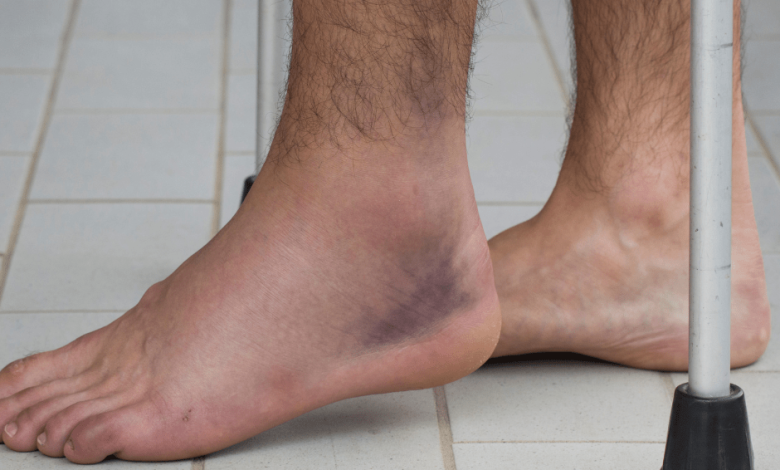Which Activities Increase the Risk of Ankle Sprains?
Which Activities Increase the Risk of Ankle Sprains?

Ankle sprains are among the most common injuries, affecting people of all ages and activity levels. These injuries occur when the ligaments that support the ankle stretch or tear due to sudden twisting or turning movements. While anyone can experience an ankle sprain, certain activities significantly increase the risk. Understanding these activities and how they contribute to ankle sprains can help you take precautions and minimize the likelihood of injury.
High-Impact Sports
One of the primary contributors to ankle sprains is participation in high-impact sports. Sports that involve running, jumping, and rapid changes in direction place considerable strain on the ankle joints. Athletes in sports like basketball, soccer, and football are particularly susceptible to ankle sprains because these sports require quick lateral movements and sudden stops.
In basketball, for example, players frequently jump and land on one foot, making them vulnerable to rolling their ankles. Similarly, soccer players often twist and turn while dribbling, increasing the chances of overstretching the ligaments. The intense physical demands of these sports make ankle sprains a common injury among athletes.
Running on Uneven Surfaces
Running is a popular form of exercise, but it can also increase the risk of ankle sprains, especially when done on uneven surfaces. Trails, hills, and rocky terrain present obstacles that can cause runners to lose their footing and twist their ankles. Even experienced runners can fall victim to a hidden rock or uneven patch of ground.
When running on uneven surfaces, the foot may land awkwardly, causing the ankle to twist in an unnatural position. This sudden motion can easily lead to a sprain. Additionally, fatigue can compromise a runner’s form, making them more prone to missteps and injuries.
Dancing and Gymnastics
Dancing and gymnastics require a high degree of flexibility, balance, and control. However, these activities also place significant stress on the ankles. Ballet dancers, for instance, often perform on the tips of their toes, which requires strong and stable ankles. A slight misalignment or loss of balance can result in an ankle sprain.
Gymnasts are also at risk due to the complex maneuvers and landings they perform. A poorly executed landing from a jump or flip can cause the ankle to roll or twist, leading to a sprain. The repetitive nature of these activities can also weaken the ligaments over time, increasing the risk of injury.
Hiking
Hiking is an enjoyable outdoor activity that offers numerous health benefits, but it can also increase the risk of ankle sprains. The uneven and unpredictable terrain encountered while hiking can make it difficult to maintain balance, particularly on steep inclines or declines. Loose rocks, tree roots, and slippery surfaces add to the challenge and can cause hikers to twist their ankles.
Wearing appropriate footwear with good ankle support is essential for reducing the risk of sprains while hiking. Properly fitting boots that provide stability can help protect the ankles from sudden twists and turns.
Wearing Inappropriate Footwear
Footwear plays a crucial role in ankle stability. Wearing shoes that do not provide adequate support can increase the likelihood of an ankle sprain. High heels, for instance, elevate the heel and shift the body’s weight forward, making it easier to lose balance and roll the ankle. Similarly, flip-flops and sandals offer little to no support, leaving the ankles vulnerable to injury.
Athletic shoes that are worn out or do not fit properly can also contribute to ankle sprains. Shoes that lack cushioning or have a worn-down sole may not absorb shock effectively, increasing the impact on the ankles during activities.
Poor Conditioning and Lack of Warm-Up
Engaging in physical activity without proper conditioning or warm-up increases the risk of ankle sprains. Muscles, tendons, and ligaments that are not properly warmed up are less flexible and more prone to injury. Athletes who skip warm-up exercises before practice or a game are at a higher risk of spraining their ankles.
Additionally, poor conditioning can lead to muscle imbalances and weaknesses that affect the stability of the ankle joint. Strengthening exercises that target the muscles around the ankle can help improve stability and reduce the risk of sprains.
Previous Ankle Injuries
Individuals who have previously experienced an ankle sprain are more likely to suffer from another one. Once the ligaments have been stretched or torn, they may become weaker and less stable, making the ankle more susceptible to future injuries. In some cases, repeated sprains can lead to chronic ankle instability, where the ankle frequently gives way during physical activities.
Rehabilitation and proper ankle sprain treatment are crucial for restoring strength and stability after an injury. Failing to fully recover from a previous sprain can result in a cycle of repeated injuries.
Sudden Increases in Physical Activity
Abruptly increasing the intensity or duration of physical activity without allowing the body time to adapt can lead to ankle sprains. Whether you’re an athlete returning to training after a break or someone starting a new exercise routine, it’s important to gradually build up your activity level. Overloading the muscles and ligaments before they are ready can cause fatigue, poor form, and ultimately, injury.
Occupational Hazards
Certain professions that involve standing for long periods, walking on uneven surfaces, or carrying heavy loads can increase the risk of ankle sprains. Construction workers, warehouse employees, and landscapers, for example, may face increased risk due to the physical demands of their jobs. Proper footwear and attention to workplace safety are essential in reducing the risk of injury.
Inattention and Distraction
In everyday life, simple distractions can lead to ankle sprains. Walking while texting, not paying attention to where you’re stepping, or rushing through an activity can result in a misstep and a twisted ankle. Staying mindful of your surroundings and taking your time can help prevent these common, yet avoidable, injuries.
Conclusion
Ankle sprains can occur in various situations, but understanding which activities increase the risk can help you take preventive measures. Whether you’re an athlete, hiker, or simply someone going about your daily routine, being aware of these risk factors is the first step in protecting your ankles.
If you do experience an ankle sprain, it’s important to seek proper care to ensure a full recovery. Ankle sprain treatment involves rest, ice, compression, elevation (RICE), and in some cases, physical therapy or bracing. For those seeking professional care, ankle sprain treatment in Scottsdale, AZ, offers comprehensive options to help you get back on your feet and reduce the likelihood of future sprains. By taking precautions and addressing injuries promptly, you can maintain healthy, strong ankles and continue to enjoy your favorite activities.









